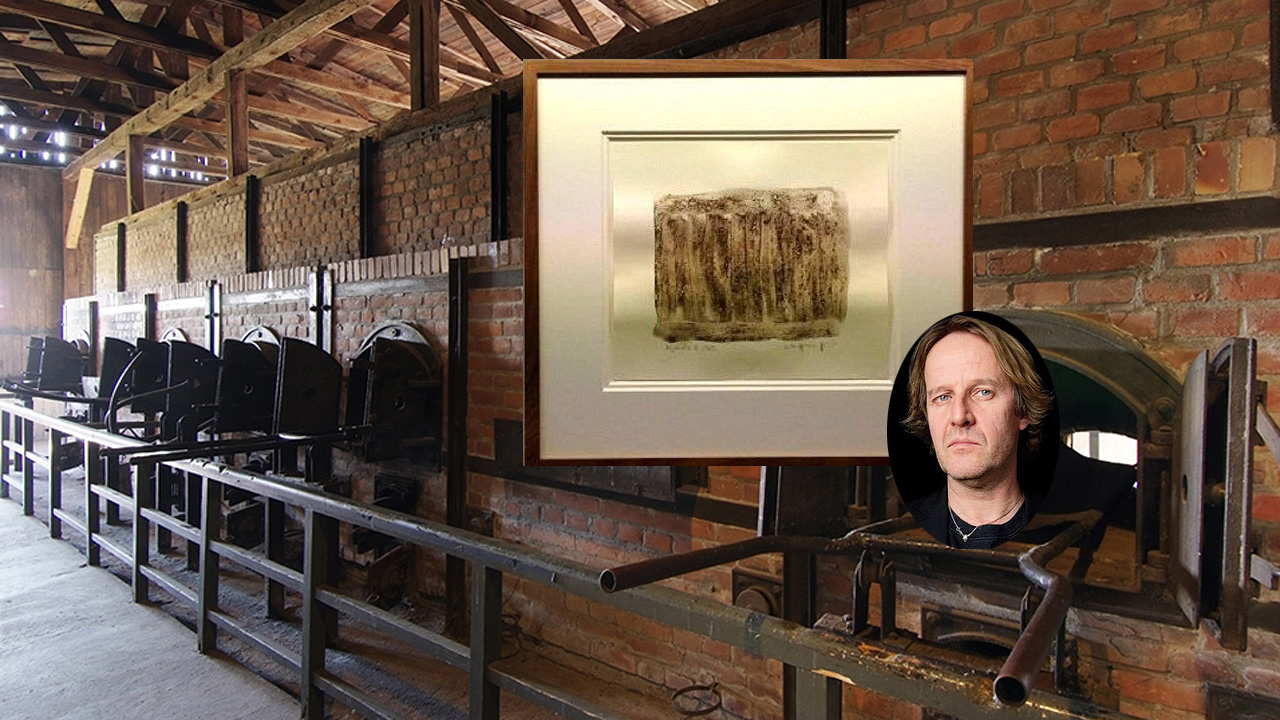Swedish artist Carl Michael von Hausswolff claims that in 1989, he collected ashes from the preserved ovens of a Majdanek Holocaust-era crematoriums. He kept them bottled until two years ago. Painted in said alleged ashes, Memory Works was exhibited in a gallery in Southern Sweden in December. The show was shut down after protests from Jewish community representatives who called it “repulsive in the extreme.”
And now, the artist, who also curates and works with experimental electronic music, is under investigation by the Polish authorities and faces up to eight years in prison for desecrating human ashes, possibly even 15.
Wait, déjà vu. Wasn’t something like this all the hoopla in 2011 with Roman Týc in Prague? Human ashes are still trending, huh?
Poland… Where your Holocaust-tinted art works go to get tested, like Cattelan’s site-specific, site-justified Lil Hitler statue. But hey, von Hausswolff, if you’re going to harvest off the psychic scar of a trauma-ridden place, I mean, if you’re literally harvesting human ashes of Holocaust victims, maybe you’d deliver something more worthwhile than a finger painting? That’s pretty awful, visually. So then, the entire worth of the work rests on the conceptual element of its medium — which being Holocaust ashes is played-out horror kitsch and I bet Eva Braun’s handbag that Marilyn Manson gave to Dita Von Teese was more aesthetically pleasing to look at and carried more conceptual weight. And since the concept is weak, only the authenticity of alleged human ashes makes this work interesting at all… and, possibly criminal. And, obviously, traumatizing to anyone connected to the victims.
Did von Hausswolff really use ashes? If yes, he’s probably going to jail. If not, he’s going to have to break the fairy tale and fess up.
It is the alchemy of pieces like this that’s crucial — like Eva and Franco Mattes’s coy-ly titled Let Them Believe film, yielded from the Plan C project when a radioactive carousel from Chernobyl was smuggled out and a re-assembled in Manchester public park, you know, for the kids. Or so the story goes. It’s very important that “the story goes.” We have to immerse ourselves. We need suspension of belief.

The conceptual success of Plan C and its historical farming is the technique (the playful guerilla “criminality”) and the result (engaging sculpture/documentation). It doesn’t hinge on whether or not the theft happened — LET ME BELIEVE! — because it’s strong enough as a site-specific, performative, kinetic sculpture. Memory Works is a boring piece of paper, allegedly smeared with death. It sucks, whether or not the ashes are real.
Now to the contemporary art champion of alchemy in art: Dario Robleto. This is At War With The Entropy of Nature / Ghosts Don’t Always Want To Come Back, 2002. It consists of “cassette tape made from carved bone and bone dust from every bone in the body, trinitite, melted and dissolved audio tape of an original composition of military drum marches and soldiers’ voices from battlefields of various wars made from EVP recordings (Electronic Voice Phenomena: voices and sounds of the dead or past, detected through magnetic audio tape), metal, screws, dust, and Letraset.” Now this is alchemy. I believe it’s real. I choose to.
Were it possibly the bone dust of my great-grandma, I might feel differently, but I still wouldn’t deny his works is brilliant and devastating.
The moral? Make better art, I guess. Especially if you’re stealing human ashes.



